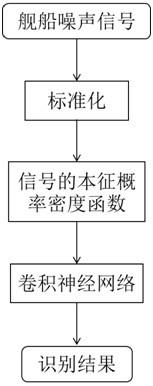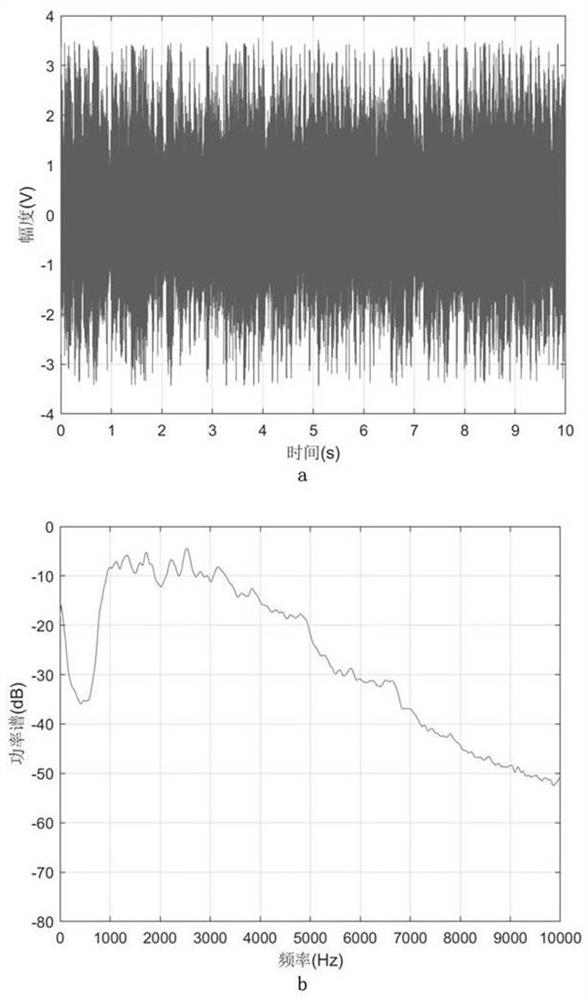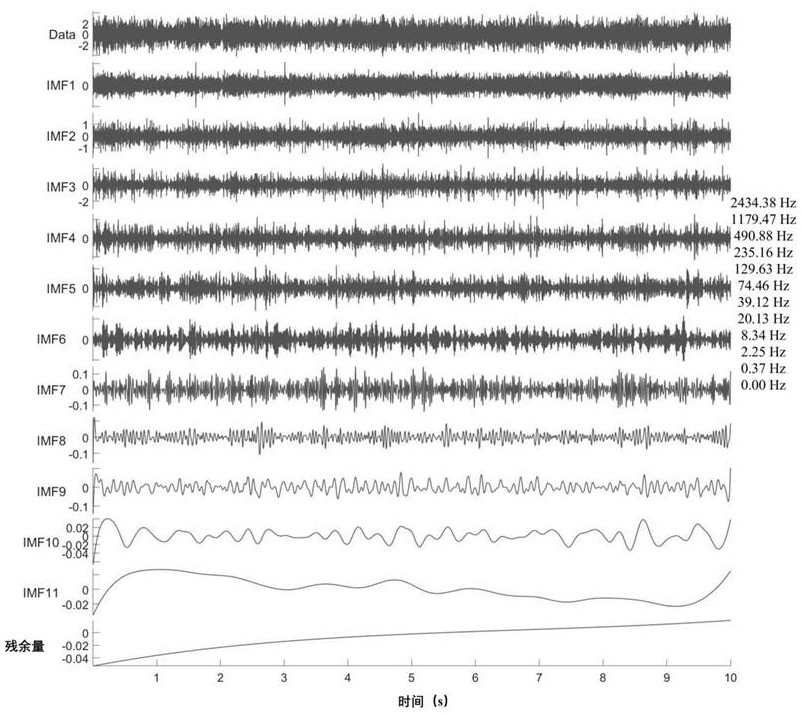Ship underwater noise deep learning identification method based on eigen probability density function
A technology of probability density function and deep learning, applied in the field of marine information, can solve the problems that the modulation spectrum method is difficult to obtain stable features, the time-varying influence of underwater ship signals, and the poor recognition effect, so as to reduce the degree of interference and meet the The effect of processing requirements and accurate and stable identification
- Summary
- Abstract
- Description
- Claims
- Application Information
AI Technical Summary
Problems solved by technology
Method used
Image
Examples
Embodiment
[0032] Here we take the underwater noise signals of 5 ships as an example. The names of the ships, their length and sampling rate information are shown in the table below. Divide these signals into frames, the length of each frame is 10 seconds, and the overlap between frames is 9 seconds, so for these 5 ships, we get 123, 170, 215, 402 and 675 frames respectively. For these data, the processing steps of the inventive method (see figure 1 )as follows:
[0033]
[0034] The first step is to standardize operations. Perform a normalization operation on a frame of noise signal s with a total length of 10 seconds to obtain a standardized noise signal s t . Since the sampling rate is already consistent, it is no longer necessary to work with a unified sampling rate. Remove the DC component of the signal: , where mean() represents the mean value operation; the power of the signal is normalized: , where std() means to take the standard deviation operation. After normalizat...
PUM
 Login to View More
Login to View More Abstract
Description
Claims
Application Information
 Login to View More
Login to View More - R&D
- Intellectual Property
- Life Sciences
- Materials
- Tech Scout
- Unparalleled Data Quality
- Higher Quality Content
- 60% Fewer Hallucinations
Browse by: Latest US Patents, China's latest patents, Technical Efficacy Thesaurus, Application Domain, Technology Topic, Popular Technical Reports.
© 2025 PatSnap. All rights reserved.Legal|Privacy policy|Modern Slavery Act Transparency Statement|Sitemap|About US| Contact US: help@patsnap.com



